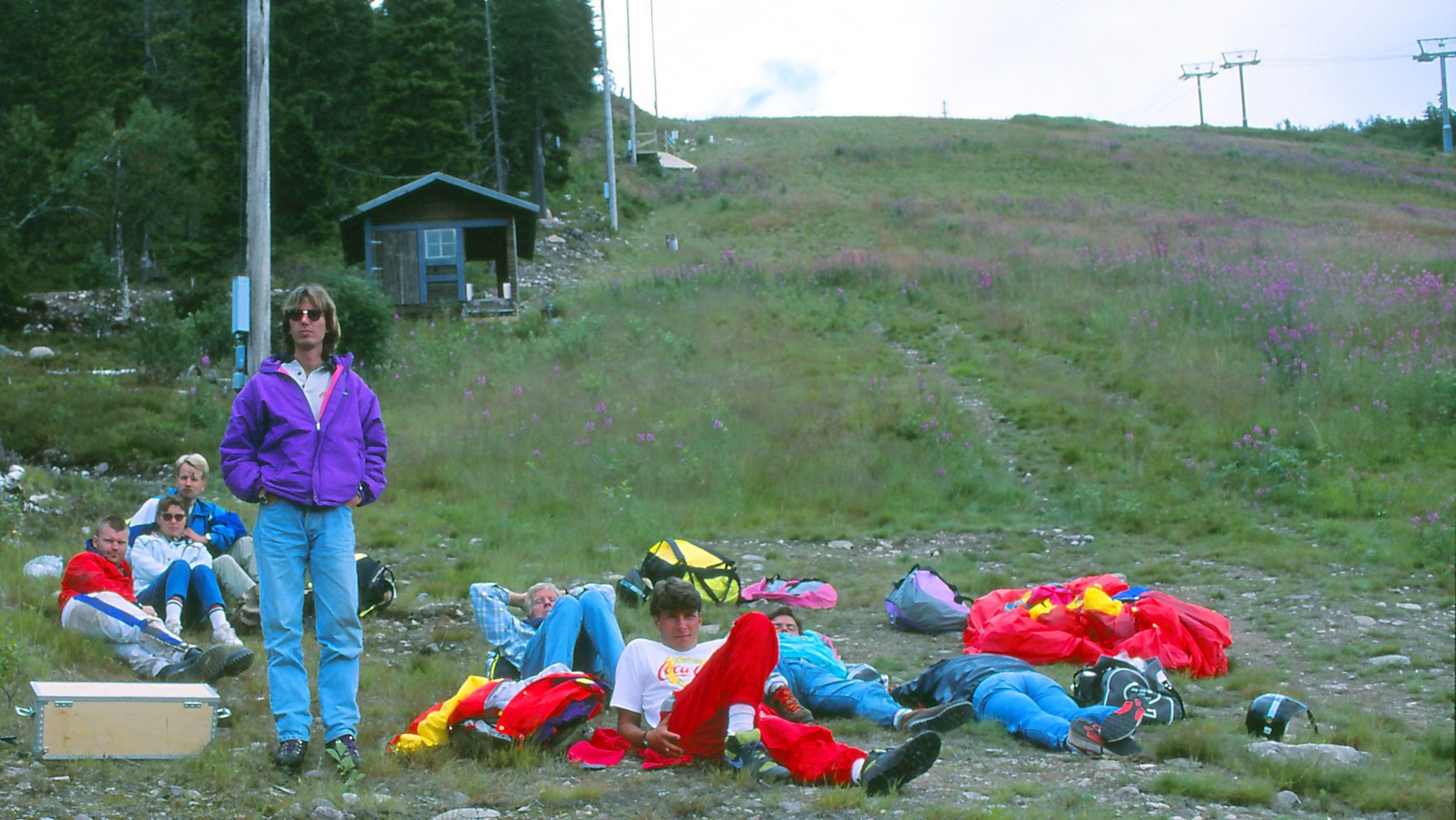Peter, the instructor, yelled run-run-run! And I ran like a devil with fire in the back, and Peter screamed – RUN! and I ran even faster … then everything became quiet. Only the suggestive sound of a paraglider on its way through the air – I flew and it was wonderful!
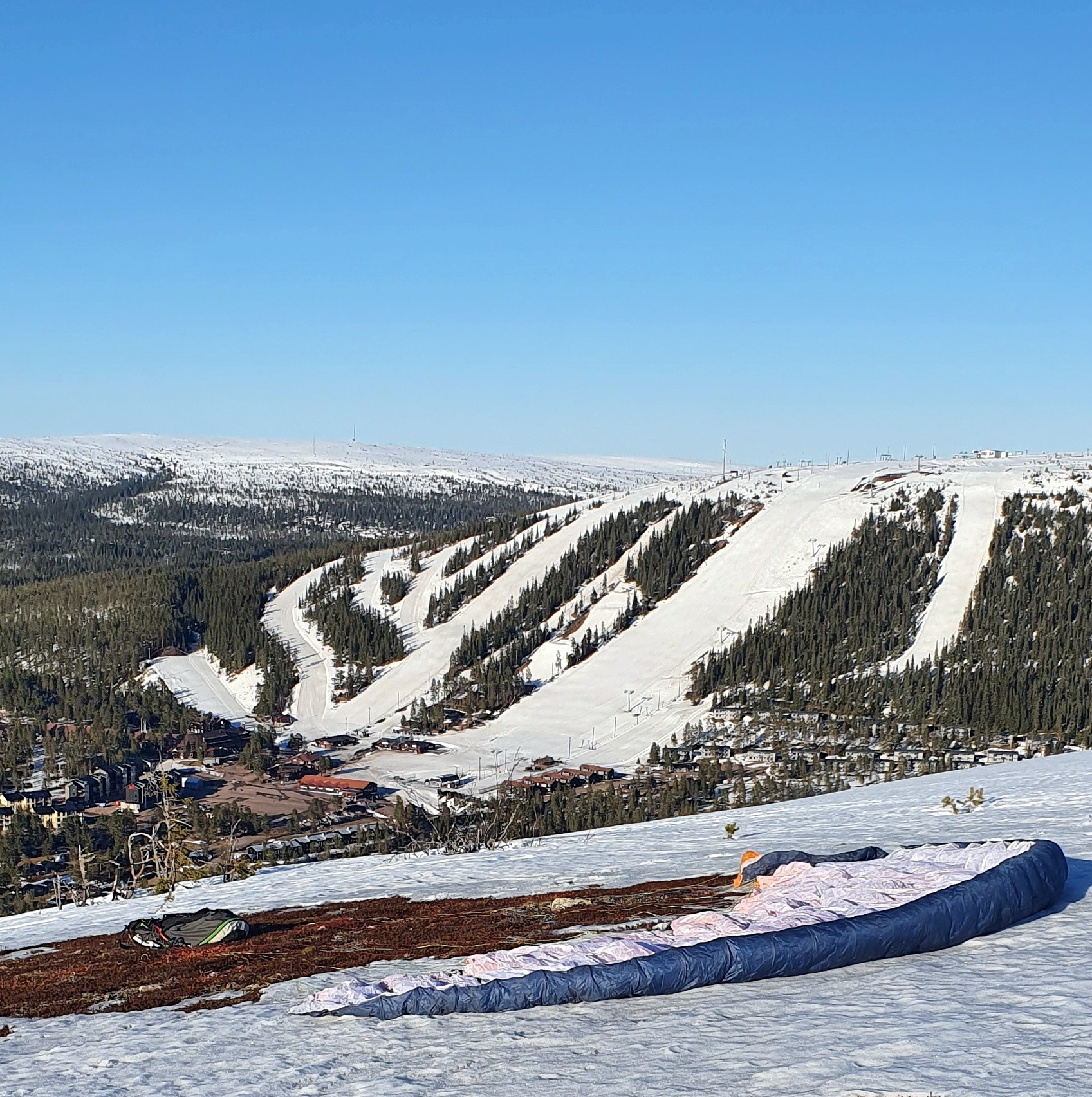
At the end of April, I was back where everything started. I got my first paraglider license in Sälen’s winter sports area in 1991. We trained and flew from Tandådalen’s ski piste and from Hundfjället. Now I was back for some nostalgic flights. Winter sports facilities had grown somewhat since the nineties, but on the whole, the experience was similar.
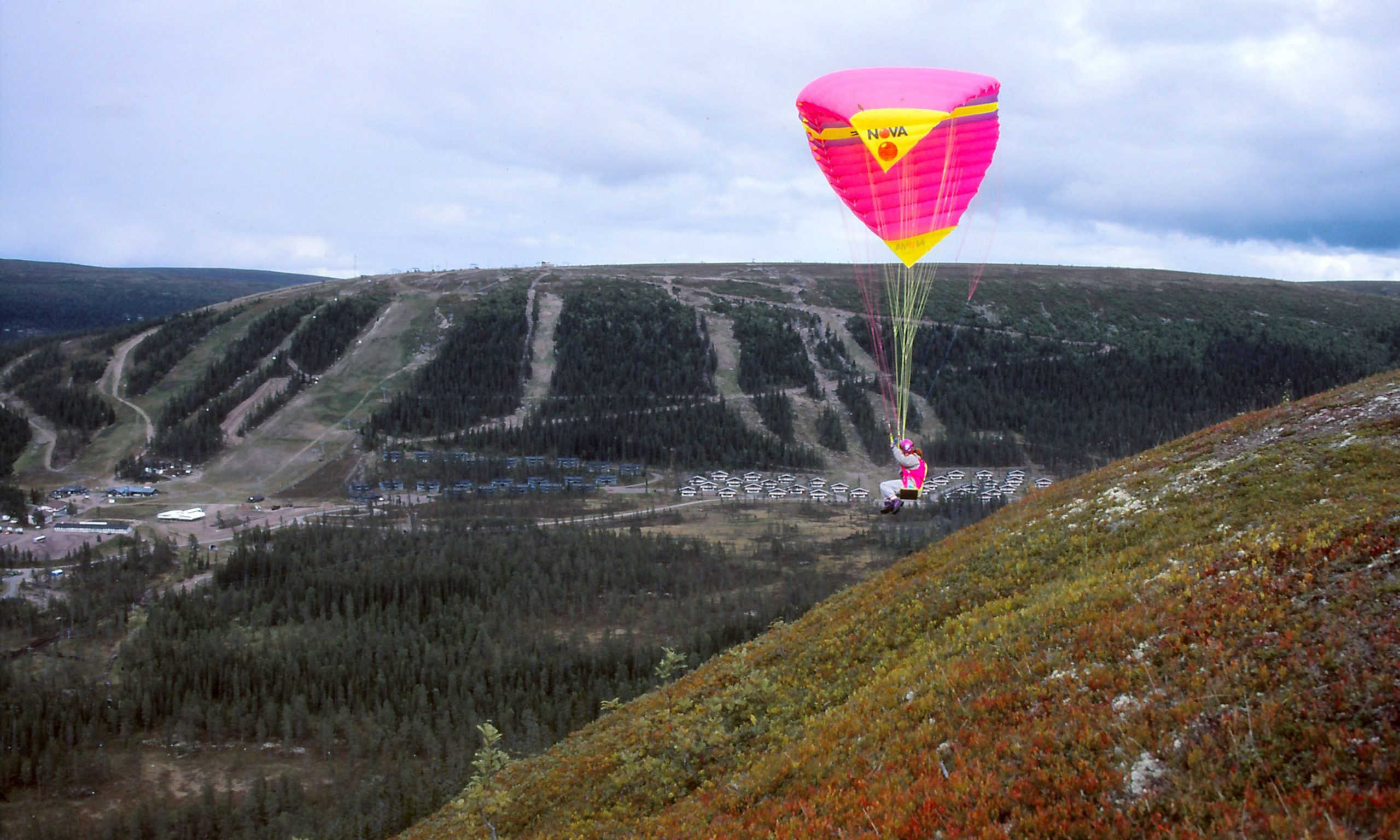
The Wall – Hundfjället, is a famous piste for speed skiing. In the north wind it is also a good place for ridge soaring. With my first paraglider I made some unsuccessful attempts during the nineties to ridge soaring but with a glide ratio (L/D) of 5: 1 at best, it needed to blow out of hell to work. Which did not suit a beginner, but I did my best, which usually resulted in me rushing down the wall in something more like parachuting than paragliding.
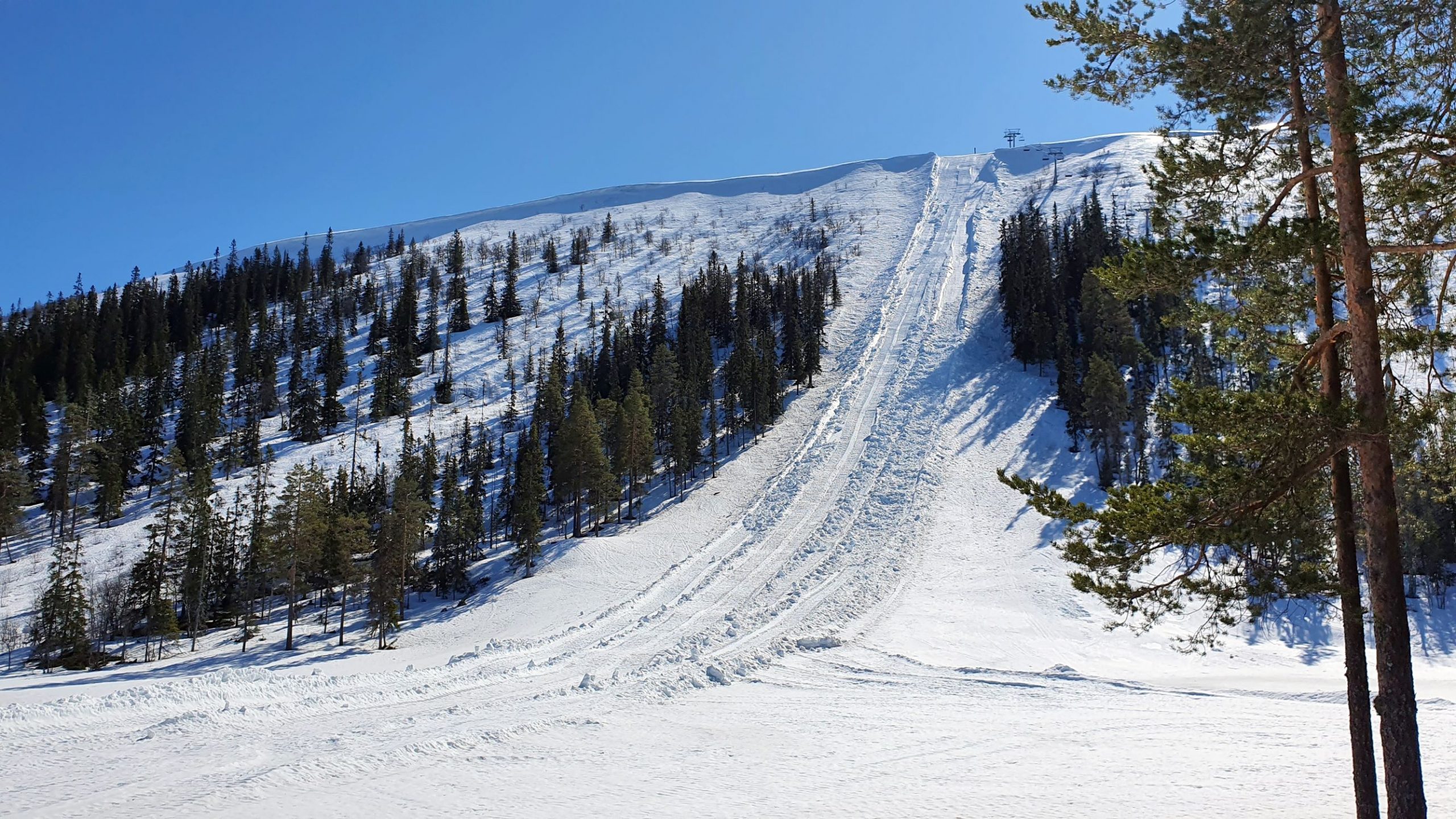
A lot has happened to the equipment since the 1990s, both in terms of performance and safety. My first glider, an Apco Speed Star, had 10 double cells, 2 risers, cords thick as tow lines and a sink rate of 1.7 m / sec. (at least) It was similar in many ways to today’s speed wings, but without most of the performance. It felt more like flying something between a water-filled balloon and a fluffy cloud, not directly controlled. (At least that’s how I remember it)
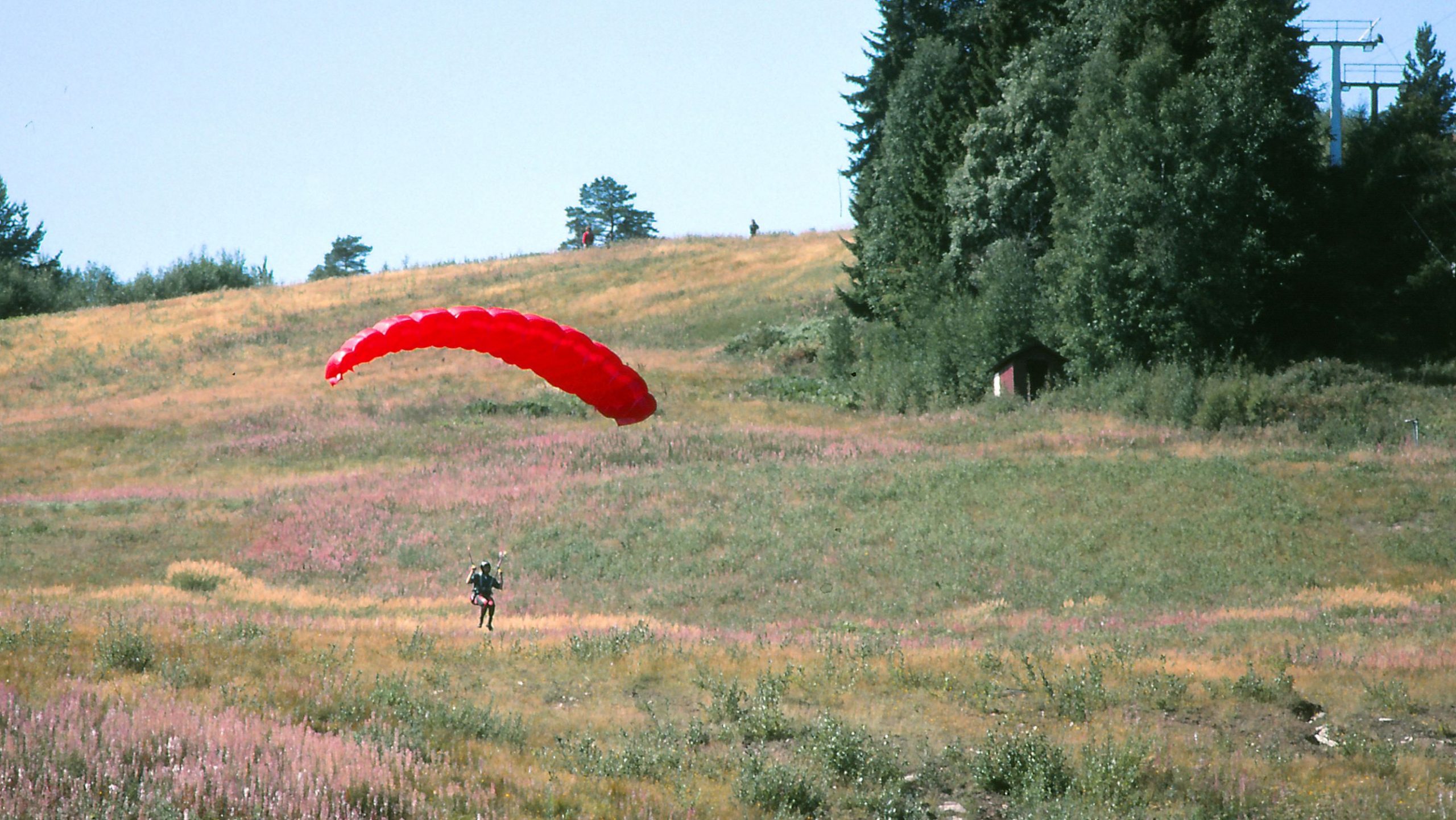
Today I have a paraglider (a few years old) that has 45 cells, about double the glide ratio, and cords thin as grass. It has high passive security and feels safe in all situations.
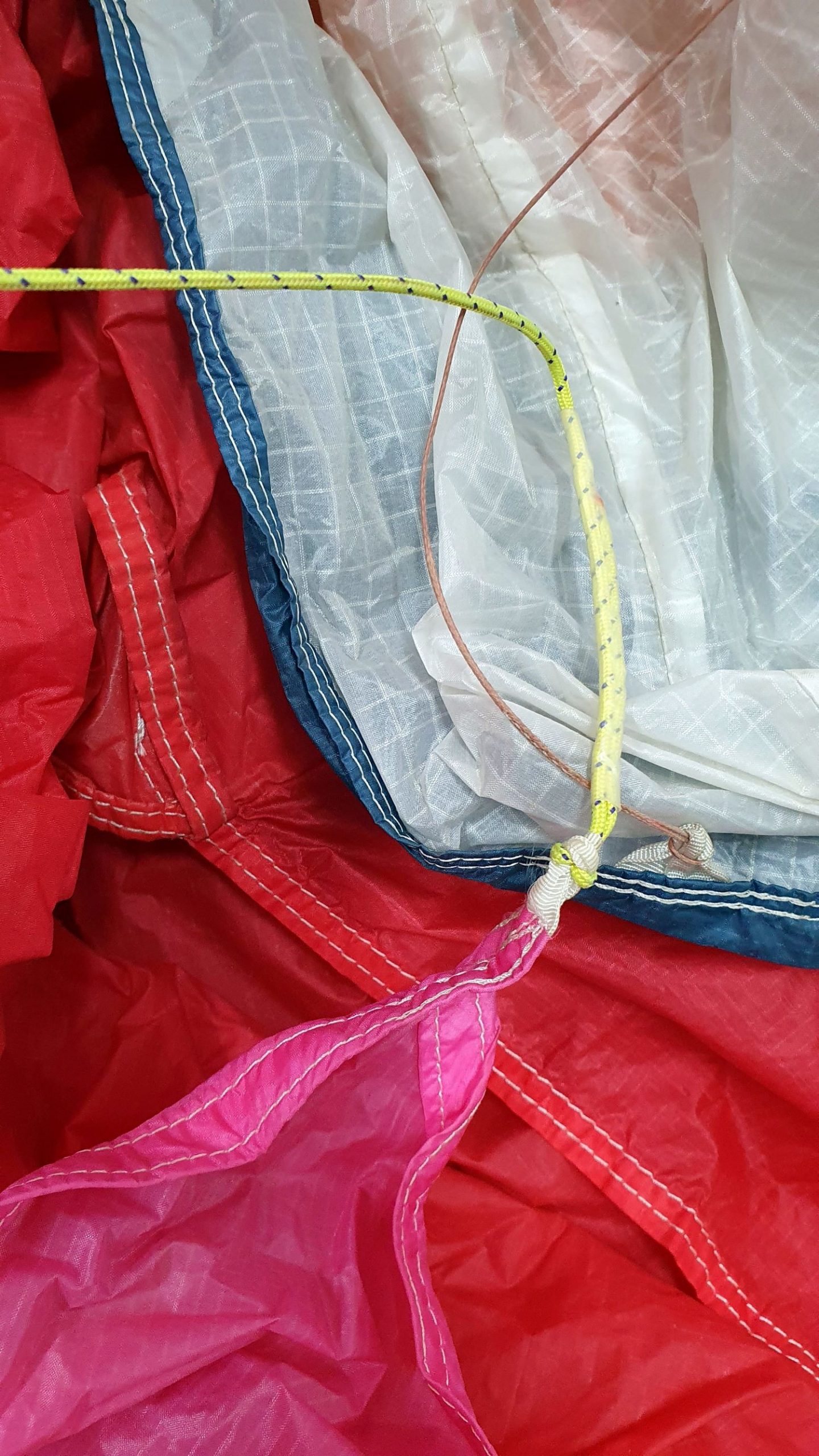
Today’s harness is reversible, so it also acts as a backpack. It has airbag, speed system, reserve parachute and is comfortable as an armchair. My first harness consisted of fabric and a plank to sit on. They have been developed so to speak.

My second harness had a little more padding on the board and a reserve parachute. You sat almost well for a while; it was of the latest model. High-tech and cool. Colorful …

One thing that is exactly the same today as when the sport started, Parawaiting! Instructor Peter Ahlbin, and a collection of expectant students in 1991. I sent Peter many grateful thoughts as I soar over Hundfjället again.
